A blocky building of exposed concrete looms before you at Heyri Art Village in Paju. Then, the heavy steel door at the entrance swings open, unleashing waves of majestic classical music. Stepping inside, you find yourself immersed in the space and in the swelling music. Before long, you’re cut off from the outside world, inhabiting a moment entirely your own. That moment is provided by Music Space Camerata, a music appreciation room created by Hwang In-yong, a former announcer and DJ.

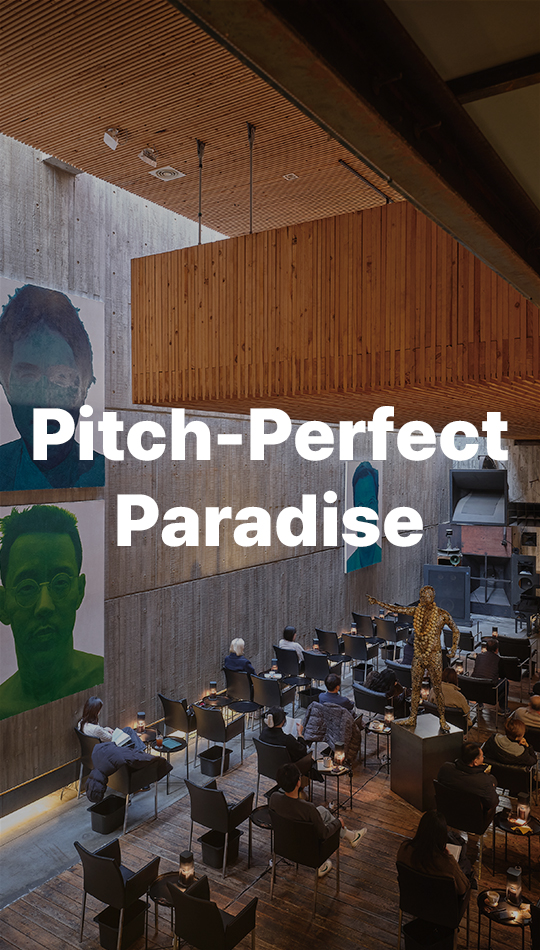
Writer. Jang Heejoo
Designed for Your Listening Pleasure
The first thing you’ll see at Music Space Camerata is the massive sound system lining the wall in front of you. There’s a quartet of vintage audio equipment, including German-made Klangfilm speakers and original Western Electric speakers manufactured in the United States in the 1930s. The hulking devices look so unfamiliar that you may not immediately realize they are speakers at all. There’s a piano in front of the speakers, and tube amplifiers and other equipment are carefully positioned on either side. All the equipment is designed to produce sounds optimized for Music Space Camerata through various experiments for 25 years since it opened. On one side of the listening hall is a song selection room. While visitors aren’t allowed inside, they can get a peek from the hall. The smaller room is jam-packed with more than 15,000 records in Hwang’s collection. The rows upon rows of faded records evoke the wonder that only comes from age.
Interestingly, the seats in the room are all arranged to face the speakers. That’s not the setup that accommodates conversation between visitors as you’d expect from a typical café. The result is that all visitors here are either engrossed in the music, reading a book, or quietly doing their work. Once you’re ready to enjoy the space like everybody else, lean back against the mild slope of the plush chair and let yourself be swept away by the classical music filling the air. Closing your eyes brings the music to life, creating the impression that an orchestra is performing right before you. If you like what you hear, take note of the whiteboard by the song selection room. That’s where a staff member―sometimes Hwang himself―writes the name of the current album. There’s something striking about seeing somebody painstakingly writing down the name of each album as it’s played, adding another layer of depth to the space.
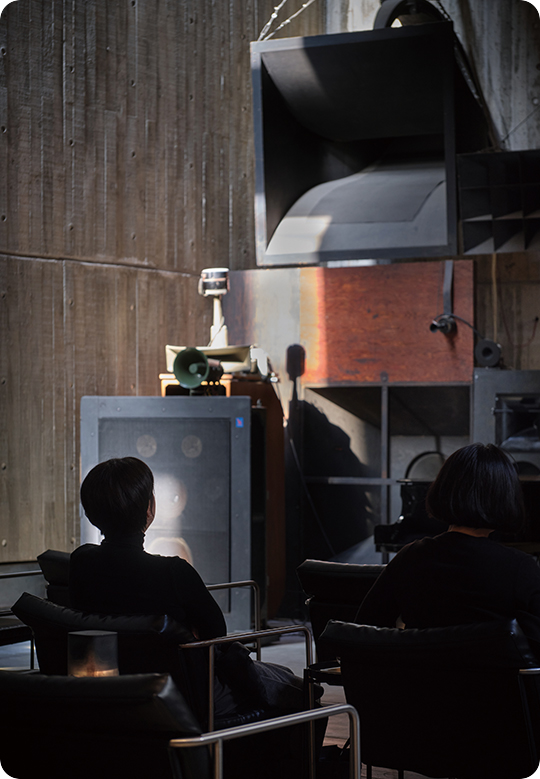
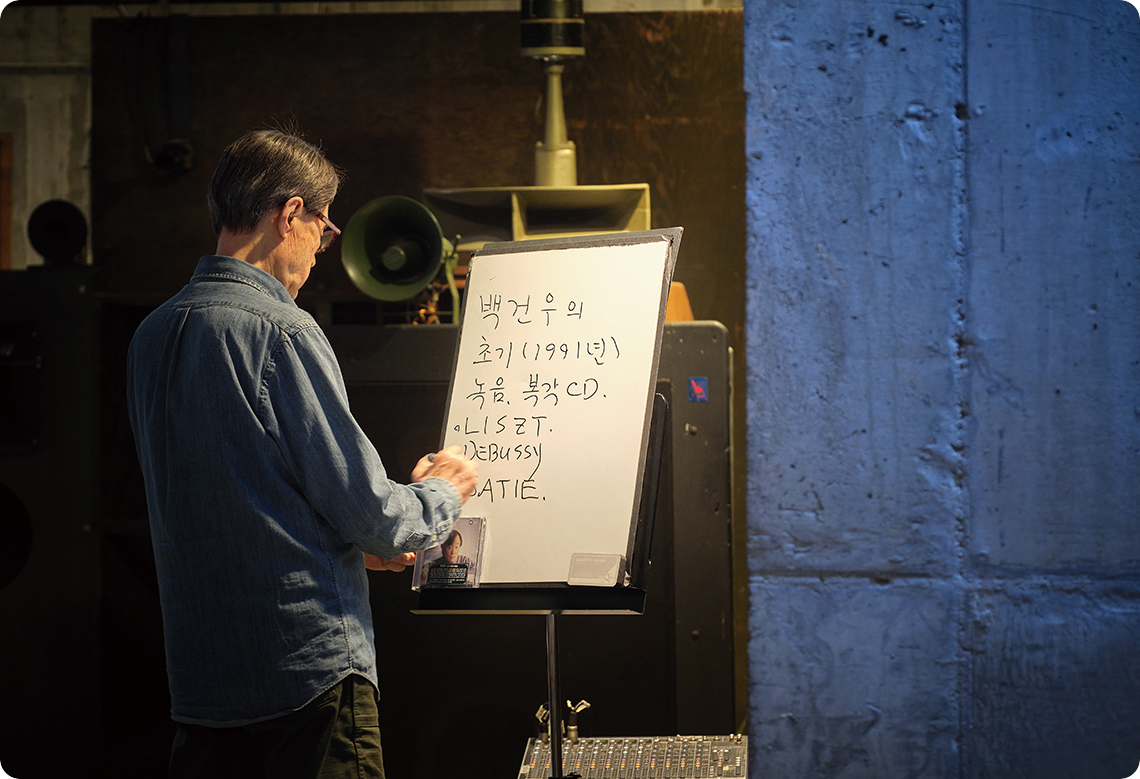
While reclining in your seat, look up to see how high the ceiling goes. While Music Space Camerata has three floors, the only things on the second floor are the bathrooms and a staircase leading to the third floor. That leaves a floor’s worth of empty space above the listening hall. The third floor is suspended by wires, without any pillars to hold it up, and only extends partway across the building, letting light filter down from windows on that level all the way to the hall below. That provides gentle illumination for the first floor that harmonizes with the music. Sunbeams occasionally emblazon dramatic scenes on the walls, which makes it a good idea to visit on a sunny day. All told, Music Space Camerata presents a pleasing mixture of music, light, and ambiance, like a picture brought to life.
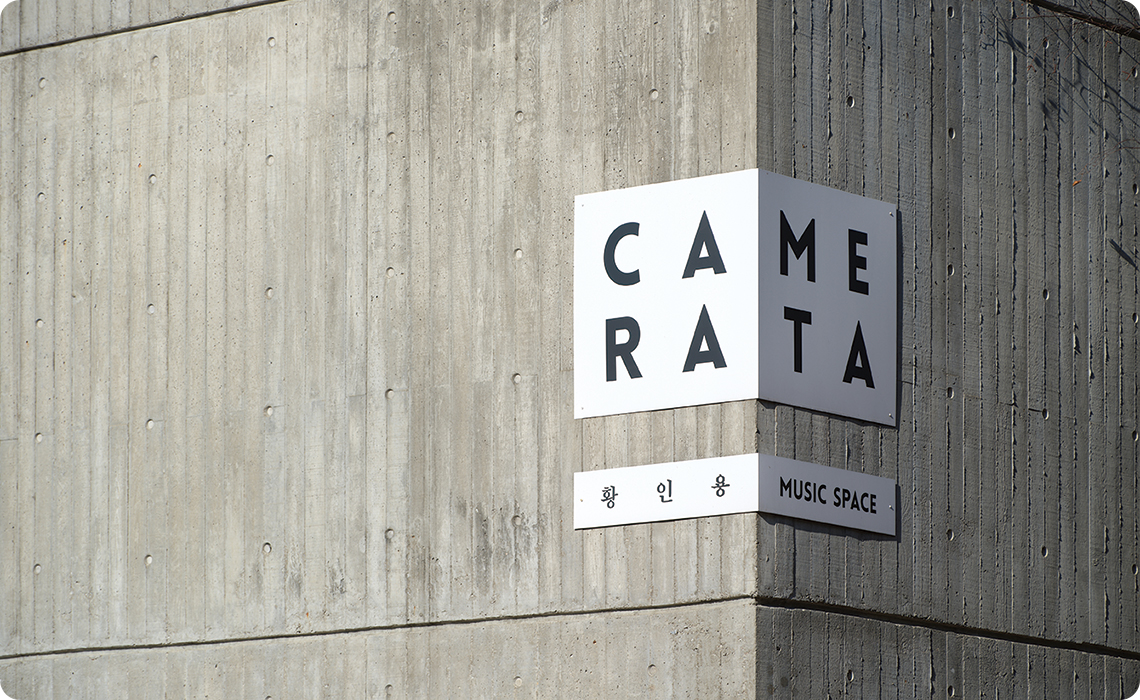
Special Programs for
a Special Space
A camerata was originally a small room where poets, architects, artists, and musicians would gather for banter and debate in 16th-century Florence. Hwang chose the name with the hope that artists would congregate to the space. Perhaps for that reason, Music Space Camerata organizes special programs that bridge different forms of art and bring together artists and the public, making what’s already a special space even more special.
Perhaps the best-known program at Music Space Camerata gives visitors a chance to meet musicians in person as part of a concert. A variety of other concerts are held at the listening hall: Music Space Camerata decides on the theme and recruits the musicians.
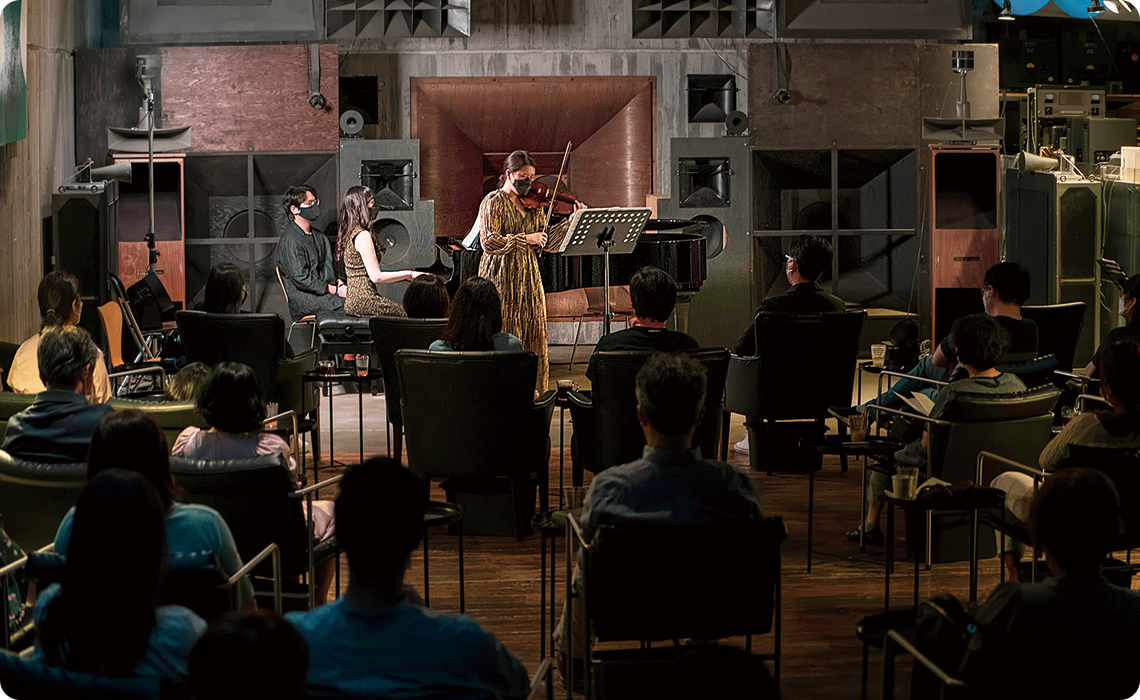 Music Space Camerata organizes monthly performances that it plans directly. The performance schedule is uploaded on Camerata’s blog at https://blog.naver.com/h_camerata.
Music Space Camerata organizes monthly performances that it plans directly. The performance schedule is uploaded on Camerata’s blog at https://blog.naver.com/h_camerata. © Music Space Camerata
Another program gives audience members access to both past classics and new releases for the listening delight of all, including classical music newbies. Another program, “Camerata’s Choice,” with Warner Classics, gives audience members access to past classics and new releases, delighting all listeners, including classical music newbies. Every year, the program’s theme is changed. This year’s theme is “Maestro,” which showcases twelve albums by maestros who have greatly influenced our era.
Other programs at Music Space Camerata combine classical music with other genres of art. For example, there’s the “Camerata’s Library,” a collaboration with publisher Munhakdongne. Each month, Munhakdongne assembles a list of newly released books that are a good match for the listening hall. The book list comprises a diverse range of books, from Nobel Prize-winning authors to the latest works of emerging writers worldwide. The curated books are displayed at the entrance so that anyone who is curious can flip through them.
Also notable is the “Exhibition of the Year,” spanning the entirety of Music Space Camerata and featuring pieces by such artists as Suh Dong-wook and Kho Nak-beom, Kim Sang-in Jeon Gi-suk. The two-person exhibition “Dual Sun” by Hee Hae and Ritesh Ajmeri is underway. Canvases on the walls and sculptures in the middle of the listening hall and on the third floor enhance the artistic atmosphere.
Stupendous speakers, outstanding albums sure to please listeners, and a space designed to help you immerse yourself in the sound—together, they make for a wonderland of art and music.
 On clear days, sunlight from the 3-story-high ceiling drapes the inside walls, creating an even more dramatic scene. © Music Space Camerata
On clear days, sunlight from the 3-story-high ceiling drapes the inside walls, creating an even more dramatic scene. © Music Space Camerata